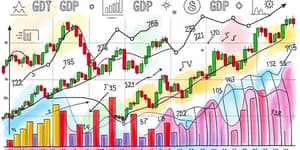
In an era where markets swing with unprecedented speed and amplitude, traders must arm themselves with knowledge, discipline, and practical tools. This handbook offers a comprehensive roadmap for navigating the turbulence of modern financial markets, blending data-driven insights with time-tested strategies to help you stay ahead.
Market volatility represents the degree of variation in asset prices over time. It’s a barometer of uncertainty that traders monitor closely. Two primary forms exist:
Implied and historical figures often diverge, creating what practitioners call the volatility risk premium opportunities—a core concept for advanced trading strategies.
This year has been marked by persistent geopolitical tensions and trade disputes—from Eastern Europe conflicts to tariff negotiations—fueling higher-than-average volatility. The VIX has averaged 21.4, a level seen only during rare crises in the past decade. Typical daily moves in the S&P 500 hover around ±1.35%, underscoring the market’s jittery nature.
At the same time, the MOVE Index for U.S. Treasuries shows elevated swings in fixed-income markets, driven by shifting inflation expectations and interest-rate debates. Labor data—such as the addition of 125,000 jobs in January and a 4.1% unemployment rate—adds further complexity, creating a mosaic of uncertain drivers.
Diversifying your toolkit is crucial when volatility spikes. Key instruments include:
Mastering volatility requires a solid grasp of the Greeks—Delta, Gamma, Vega, Theta, and Rho—which measure sensitivity to price, time, and volatility changes. The venerable Black–Scholes model serves as a starting point for pricing, though more sophisticated frameworks (stochastic volatility and jump-diffusion models) better capture real-world dynamics in choppy markets.
Another cornerstone is understanding the gap between implied and realized volatility. By buying options when IV is low relative to historical norms or selling when IV is rich, traders can exploit the volatility risk premium opportunities embedded in the markets.
Seasoned traders employ risk-defined strategies that adapt to shifting conditions:
Quantitative traders further enhance execution through backtested, algorithmic systems that can dynamically shift exposures.
Effective risk control is non-negotiable. Determine position sizes based on volatility-adjusted risk, set dynamic hedge adjustments and stop-loss levels, and continuously stress-test portfolios under extreme scenarios. Diversifying across asset classes—combining equity volatility trades with fixed-income hedges—can smooth performance in turbulent periods.
Equally critical is fostering emotional resilience. Volatility often triggers panic selling or fear-driven overtrading. Establishing a systematic, rules-based trading framework helps mitigate behavioral biases, ensuring that decisions remain rooted in analysis rather than impulse.
Long-term success in volatile markets hinges on discipline. Develop a clear trading plan with defined entry and exit criteria, risk limits, and performance review processes. Embrace the reality that drawdowns are part of the journey—focus on process consistency rather than short-term gains.
Engage in regular reflection and refinement. Keep a trading journal to document strategy performance, psychological triggers, and lessons learned. Over time, this practice sharpens intuition and enhances adaptability.
Market volatility may feel daunting, but it also presents unparalleled opportunities for those equipped to navigate its twists and turns. By grounding your approach in data, diversifying tools, and maintaining unwavering discipline, you can transform uncertainty into a powerful ally.
Remember that success in volatility trading is not about predicting every move—it’s about managing risk, staying patient, and adhering to principles when others succumb to fear or greed. With this handbook as your guide, you’re poised to chart a steady course through the stormy seas of market volatility and emerge stronger on the other side.
References













